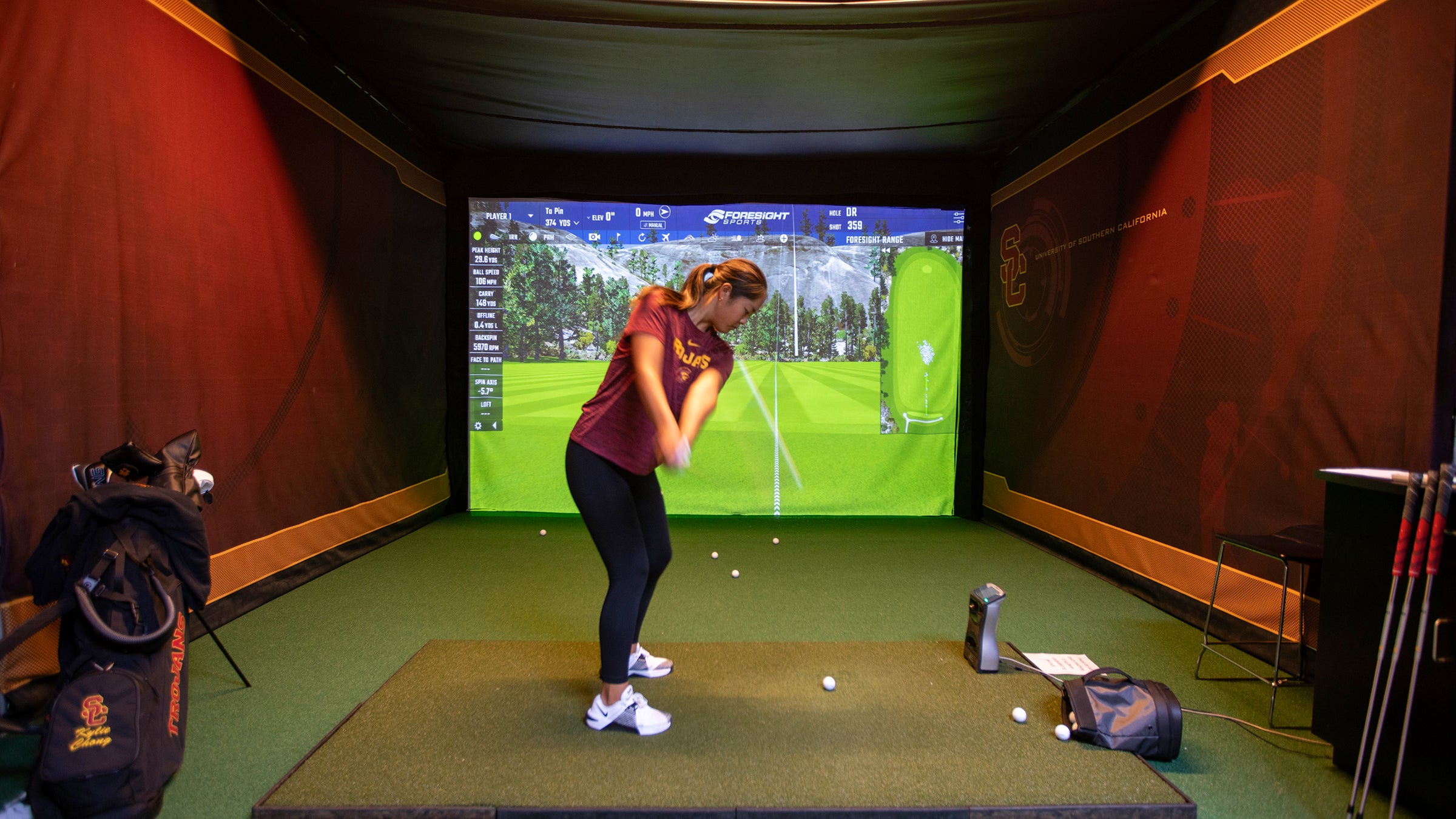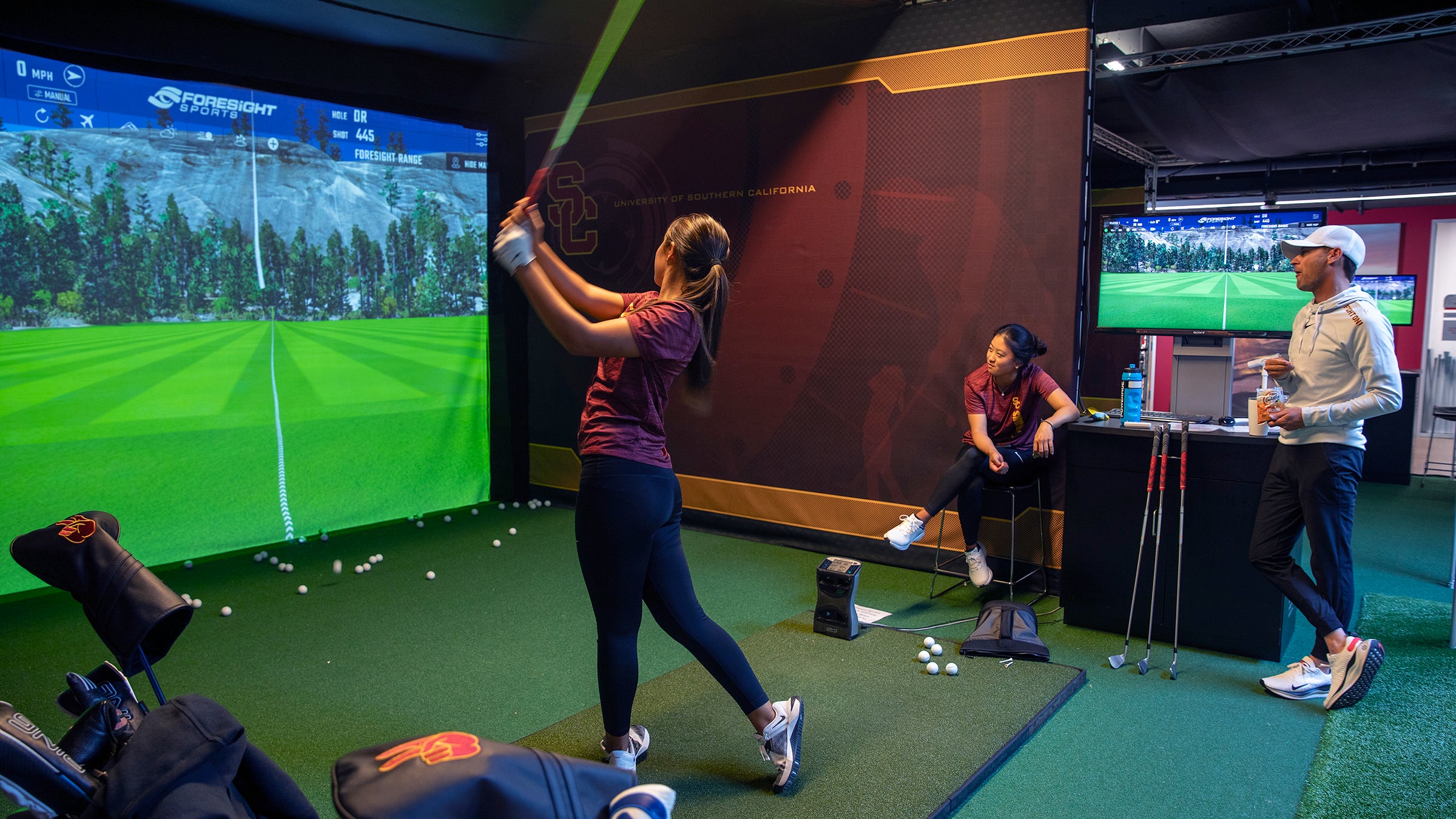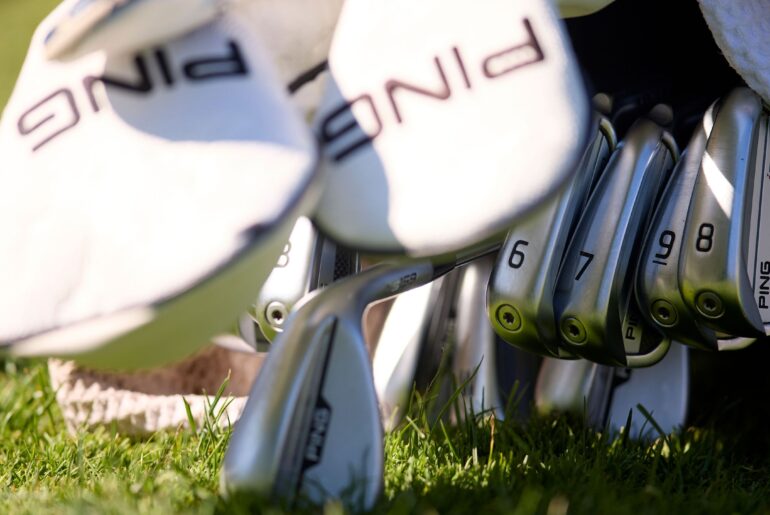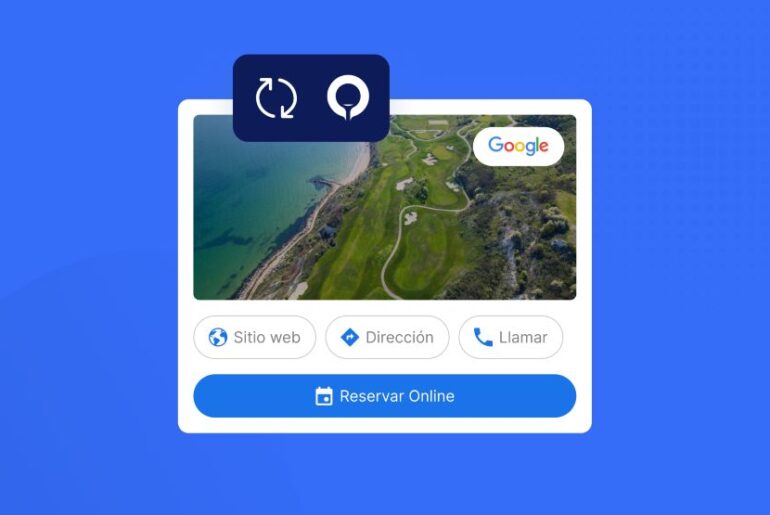As a campus tour group of parents and prospective students made its way through the foyer of Heritage Hall, marveling at the trophies of Trojan legends, one floor below, Kylie Chong worked on her short game.
Chong is a sophomore on the USC women’s golf team, and on this particular Monday morning she was practicing for an upcoming meet at Stanford University with one of the golf team’s four simulators. As Chong hit her ball into a wall-sized screen with a virtual course projected onto it, she could track the ball’s projected path, as various statistics popped up along the left side of the display. What seems like a very high-tech game of Topgolf provides Chong with a full view of her game without the outdoor elements.
“I wasn’t very into numbers and getting data before I came here, but I learned so much about my game [from data],” said Chong, a business administration major at the USC Marshall School of Business. “It doesn’t lie to you — it tells you exactly what you need to improve on and what your strengths are.”
Though both the USC men’s and women’s golf teams call the Rolling Hills Golf Course home for tournaments, much of the real work takes place in the basement of Heritage Hall on USC’s University Park Campus, where simulators provide statistics and insight the Trojans can’t get from simply playing on a course.
“[In the simulator,] I’m able to fine-tune a lot of parts of my game that I can’t do outside,” Chong said. “So, it’s a perfect time to gather data and get everything that I need to know about my clubs, and the yardages and the fields before I take it to the course and put it in play.”
Golf gets high-tech
Thought to be reserved for baseball, “analytics” has become a buzzword in many sports in recent years, and golf is no exception. When competing for a conference and national championship, every little number or detail can be used to improve one’s game. That’s why USC women’s head golf coach Justin Silverstein said Trojans have embraced the data.
“How we utilize it has become almost as important as having it in the first place, because almost every program has access to this, but we just need to use it more effectively and efficiently,” Silverstein said. “That’s how we can continue to develop at a high rate.”
 Simulators provide statistics and insight the Trojans can’t get from simply playing on a course. (USC Photo/Brian van der Brug)
Simulators provide statistics and insight the Trojans can’t get from simply playing on a course. (USC Photo/Brian van der Brug)
The technology growth has been exponential, even in the decade and a half that Silverstein has been a coach at the collegiate level. What was once only used by advanced golfers can now be accessed by kids early in their careers, he said.
“That’s why we’re seeing golfers get better earlier,” he said. “You’re getting the carry distance data, you’re getting curved data, spin data — you have all this at your fingertips now.”
The Trojan approach
At USC, the three golf simulators and putting simulator are used to track the ball and measure stats like proximity to the hole and carry yardages — the distance a golf ball travels through the air before hitting the ground for the first time — for different clubs.
“It seems very basic, but what I can tell you from doing this for 15 years now is that even elite players, when they come into our program, do not know how far exactly each club goes,” Silverstein said. “Whether it be one, two, three yards difference week to week, that’s a big deal when you’re playing at this level.”
Silverstein said the tech and data collection help current Trojan golfers and are also big recruiting points in bringing in the next generation of elite student-athletes.
“We collect and use more data than any women’s golf program in the country, and I think we do that by a comfortable margin,” Silverstein said. “We’re able to collect data to measure skill level week to week, month to month, and year to year with our athletes — so we’re trying to attract recruits that are interested in that and that want to get developed in an environment like that.”
The facilities were a selling point for sophomore Elise Lee, who transferred to USC from Northwestern University earlier this year.
“First off, Rolling Hills is an incredibly great facility,” said Lee, a communication major in the USC Annenberg School for Communication and Journalism. “But I like how on Mondays we’re able to hit in the sims here, and we’re really able to see how much we have improved or how much we need to improve.”
Supporting women’s athletics
As a golfer, Lee said that having this type of technology available to her is beneficial to her game, but as a female student-athlete, she said it shows USC’s commitment to women’s athletics.
“The new technology they’ve put in makes us feel very supported,” she said. “We’re able to see different angles of our game at a very accurate rate, so I think having that builds more confidence in our game.”
Chong echoed those thoughts, and said that at a school with iconic football and baseball programs, it’s nice to see an equal emphasis placed on women’s athletics.
“It shows how much they do support us and that women’s sports are growing and that there’s an audience,” Chong said. “I just feel like there’s nothing I can’t do or learn or improve on when I’m here.”







